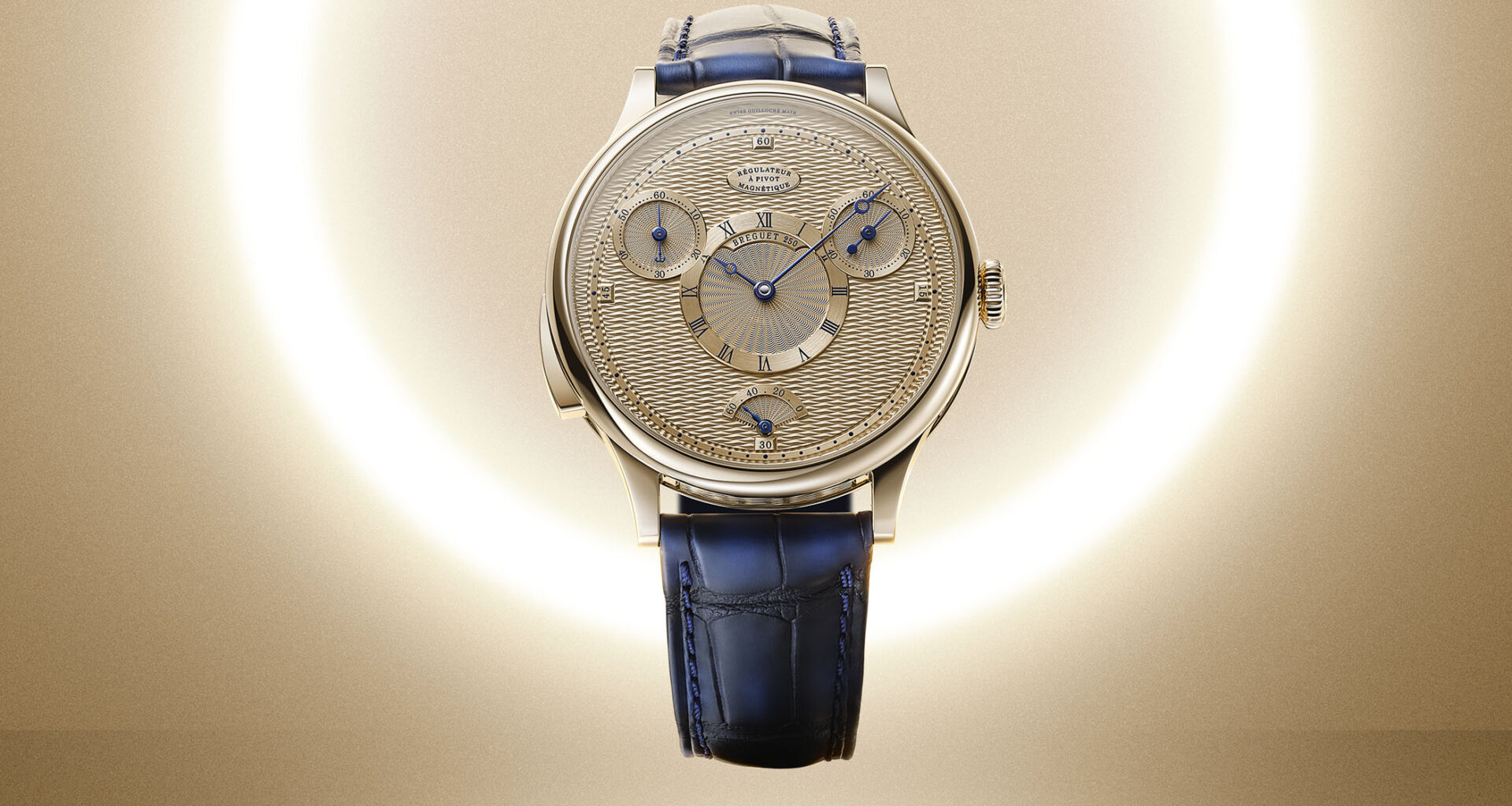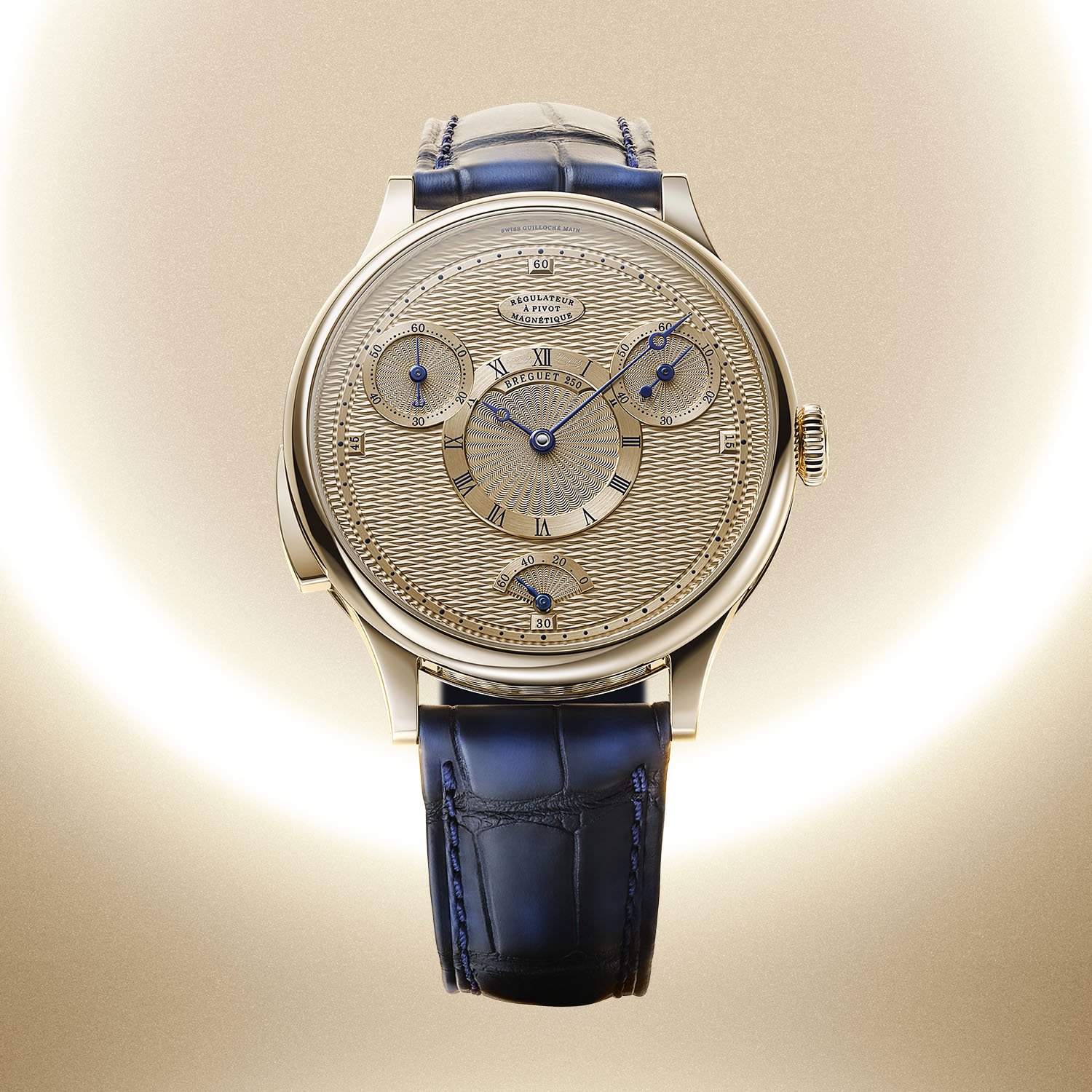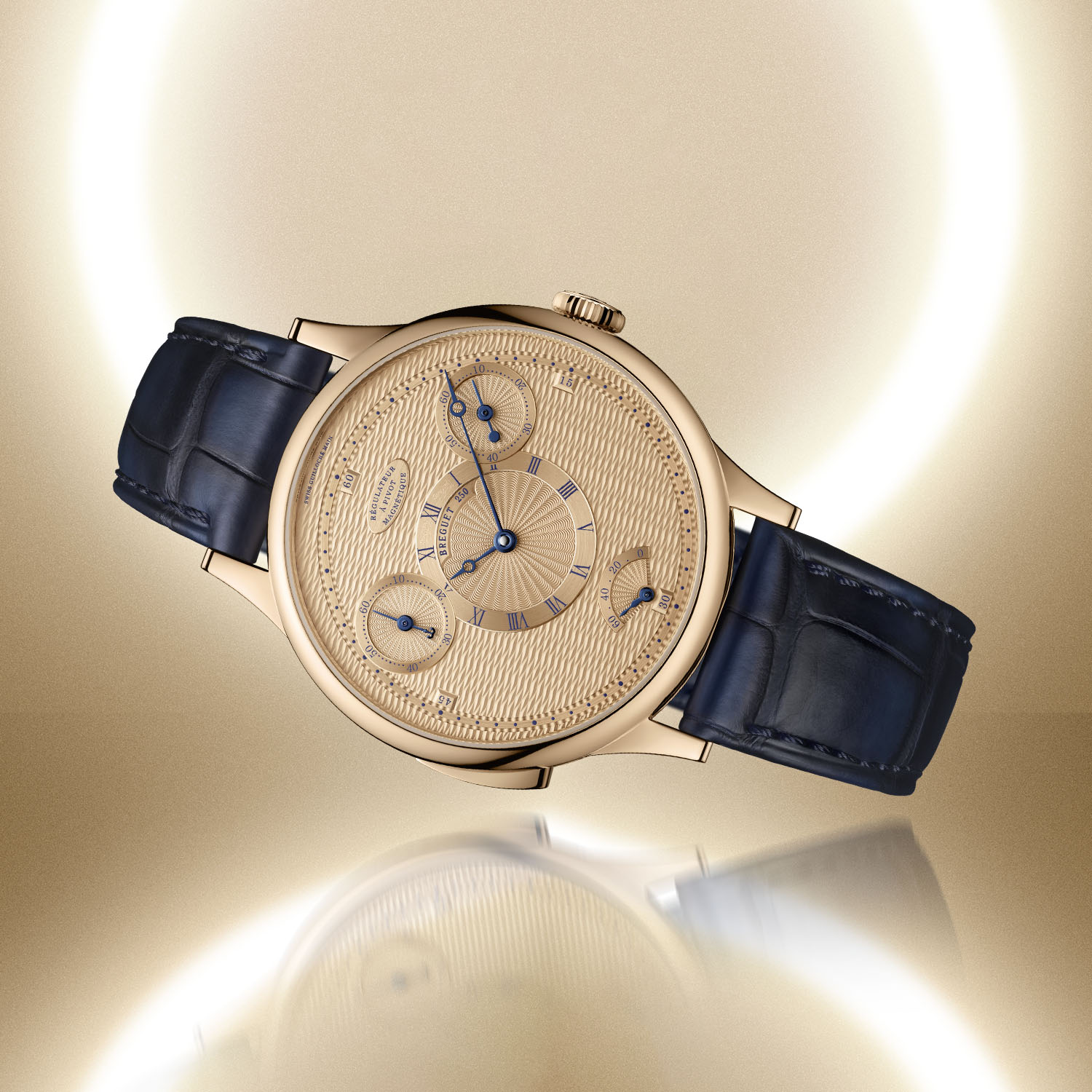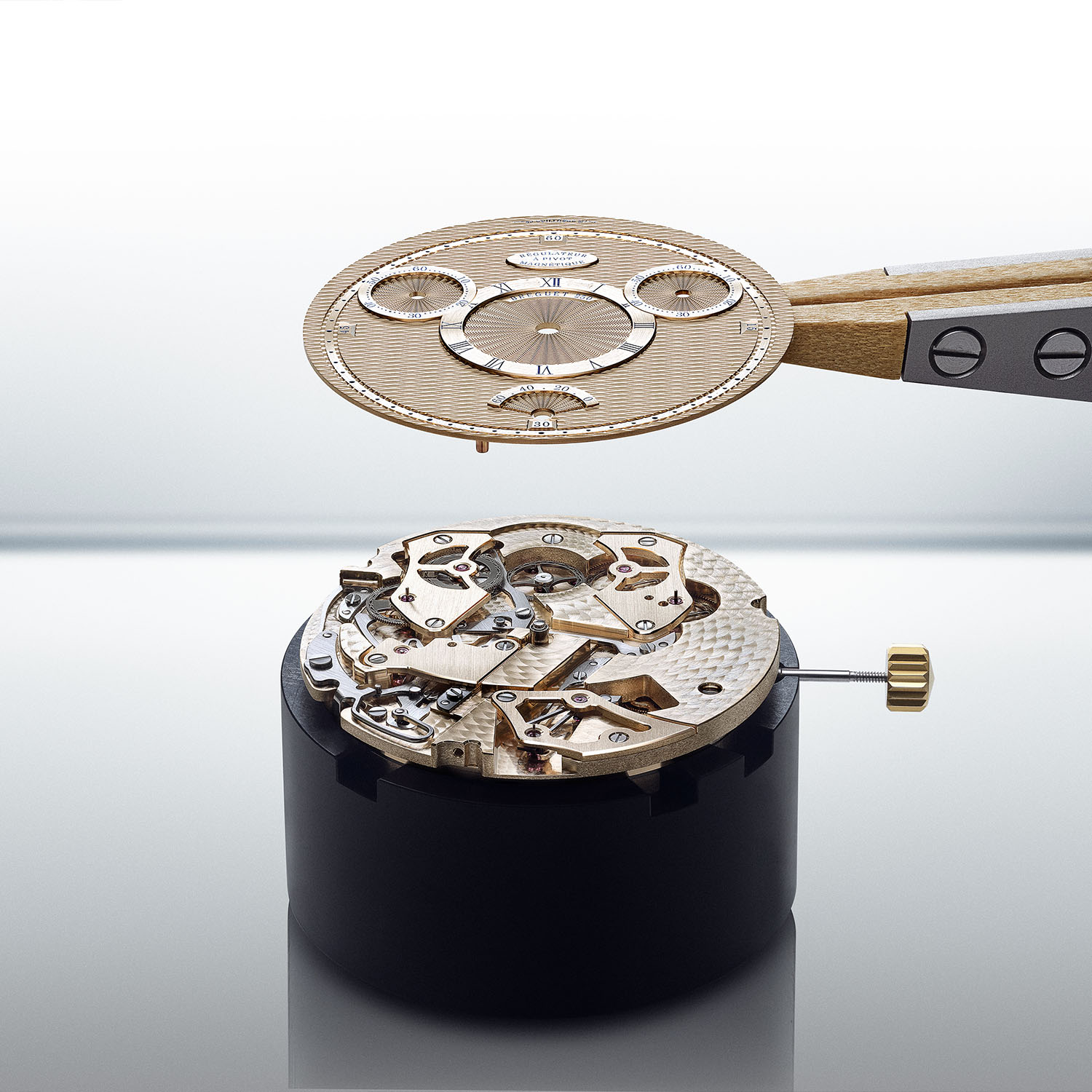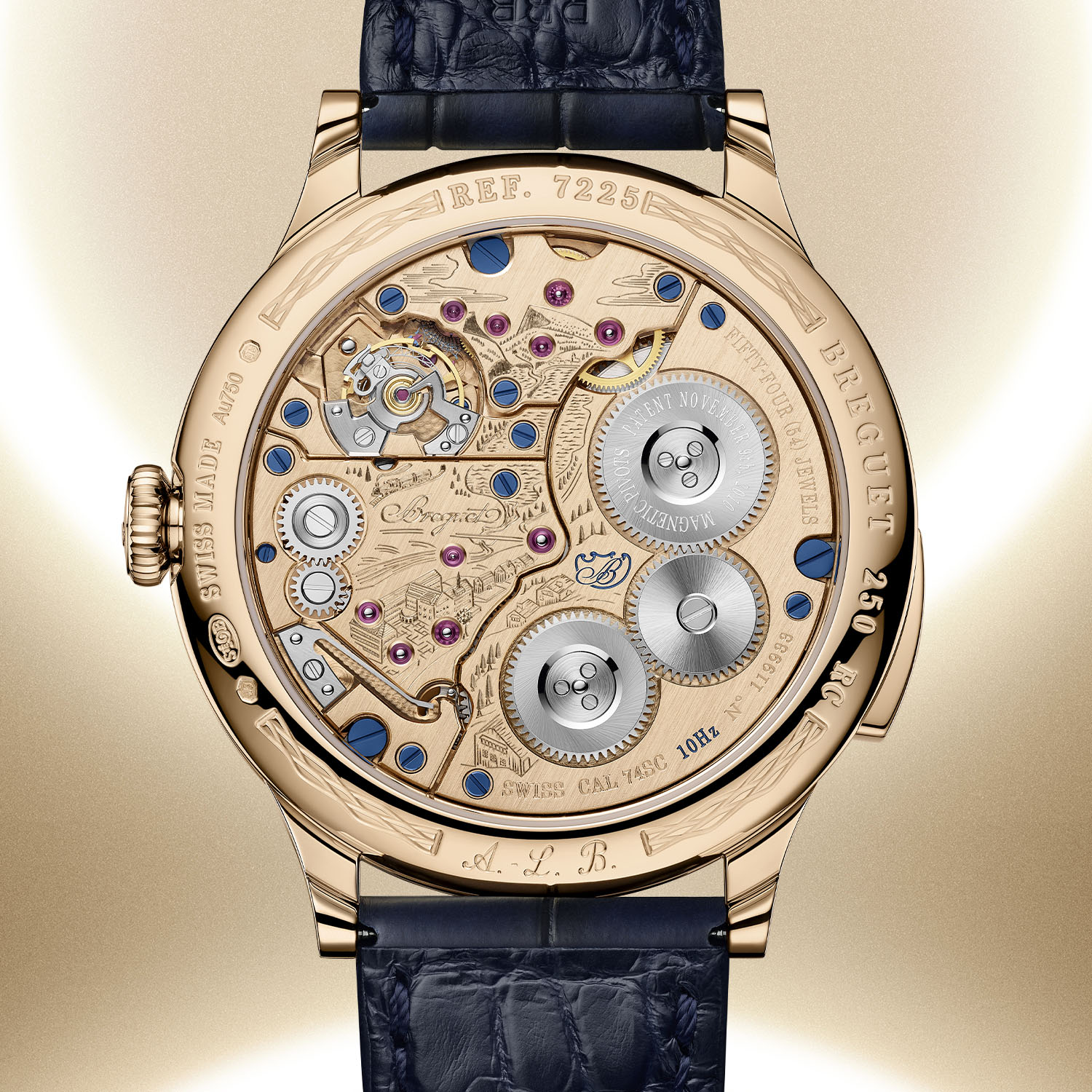As you might already know as of now, Breguet is celebrating this year its 250th anniversary. And the brand is doing so by releasing watches that are either evolutions of emblematic models – such as the two stunning hand-wound Type XX – or paying tribute to the countless innovations of A.L. Breguet, for instance the Tourbillon. The latest watch to join this 250-year collection is a tribute to one of the brand’s latest innovations, an absolute hidden gem of modern watchmaking, the magnetic-pivot balance and 10Hz high-frequency escapement that we’ve come to know from the Classique Chronométrie 7727. And on a personal note, I’m particularly happy to see this game-changing technology coming back, in this stunning-looking Breguet Classique 7225.
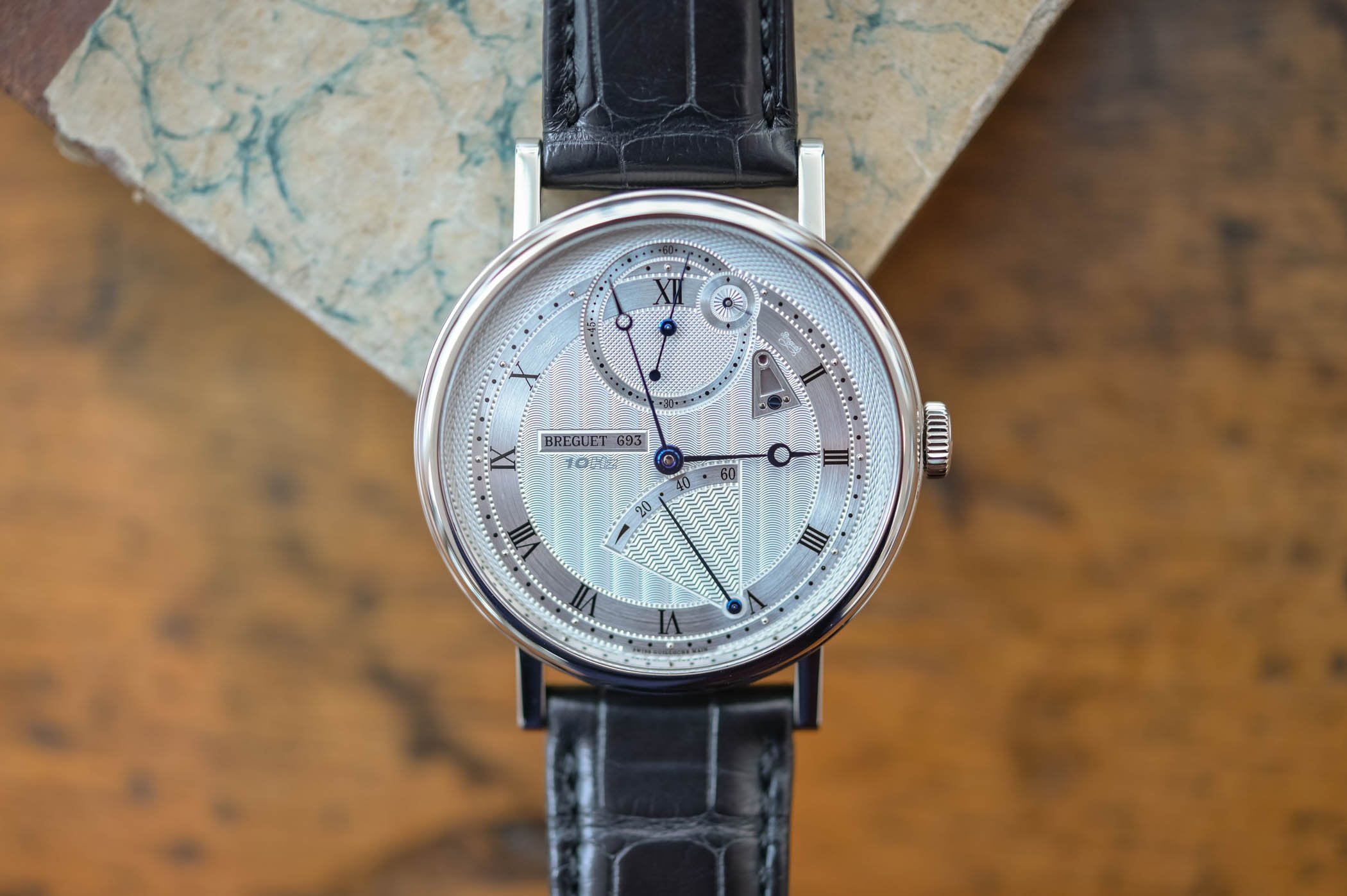 The Breguet Classique Chronométrie 7727, the watch that introduced the magnetic pivot concept in 2013
The Breguet Classique Chronométrie 7727, the watch that introduced the magnetic pivot concept in 2013
The name Breguet has always been synonymous with innovation… The tourbillon, the souscription model, the gong spring, the pare-chute… And Abraham-Louis Breguet’s influence on watchmaking is still tangible in our modern, 21st-century mechanical watches. Possibly one of the last great inventions of the brand (I hope that the arrival of Gregory Kissling as CEO will bring back innovation at the brand) was presented in 2013 and is still, to this day, rather misunderstood and underrated. This innovation was launched within the Chronometrie 7727, a watch that flew under the radar but had so much to tell. While looking classic, it features a high-frequency 10Hz movement (great) relying on magnetism to achieve greater precision. Magnetism, as you might know, is the regulating organ’s greatest enemy. But Breguet used it to the best of its capacities to improve precision… This concept is fully explained in this review and in this video.
With the new Breguet Classique 7225, we see the return of the technology as well as an improvement in style. The 7727 was maybe not the best looking watch (specifically the 10Hz logo…) Let’s first talk design… The new Classique 7225 follows the 250th anniversary rule with a case made of 18K Breguet gold, but also introduces a new shape for the collection. Gone is the fluted caseband and soldered lugs. Instead, the 41mm case relies on a more classic construction with integrated lugs and a curved profile, just like what we’ve seen with the Souscription model. The thickness is restrained too, at 10.7mm. The caseband now opts for a fine guilloché pattern, and the watch is topped by a spherical sapphire crystal.
The dial might also feel familiar, and for a good reason. It is indeed modelled after one of the most famous watches of A.L. Breguet, the No. 1176 (one of the first four watches equipped with a four-minute tourbillon). You can see photos of this exact pocket watch in this article. The solid Breguet gold dial of the Classique 7225 echoes its predecessor’s characteristics and complications: central hours and minutes, fan-shaped power reserve at 6 o’clock, along with two small seconds subdials at 2 o’clock and 10 o’clock. A “traditional” small seconds hand at 2 o’clock rotates continuously throughout the watch’s power reserve; whereas the 10 o’clock is occupied by an “observation” small seconds hand whose flyback function is activated by pressing the pusher located at 8 o’clock. This additional function makes it possible to measure intermediate times or the duration of two simultaneous events, almost like a 60-second chronograph.
But we need to talk about the centre piece… The new Calibre 74SC. Well, not entirely new as both the base architecture and the technology are carried over from the Classique Chronométrie 7727. The goal of the magnetic pivot was to enable the use of a greater frequency, without the known issues of an increased rate. The goal is to maintain a stable pivot through the magnetic field generated between two magnets, freeing its pivoting action from the effects of gravity, reducing friction and adding stability in case of shocks.
A micro-magnet is placed on either side of the balance-staff and together they create an intense magnetic flux inside the shaft. A subtle, deliberate imbalance in the flux keeps one end of the shaft in constant contact with its endstone. In the event of an impact, the magnetic forces automatically re-centre the shaft. The result is also a balance staff offering unprecedented stability in amplitude. The magnetic pivot also reduces friction drastically, as only the tip of the axis pivots against a jewel, on a minimal surface area. This use of magnetism was made possible thanks to the anti-magnetic properties of silicon, which is used for the double silicon balance-spring, silicon pallet-lever and escape-wheel.
The result is a watch capable of a 10Hz frequency (or 72,000 vibrations/hour) and an impressive precision certified by the manufacture, to a maximum deviation in rate of +/-1 second per day. Also, as a sort of “easter egg” reserved for the owner, Breguet has designed a phenakistoscope-type kinematic animation with the escape wheel, made possible thanks to the 10Hz frequency – this organ serves to display 20 images per second, enabling two inscriptions – “1775” and “2025” – to appear in turn, switching from one to the other in a smooth and fluid “morphing” effect.
The decoration of this calibre 74SC follows the rule of the 250th anniversary collection, with bridges and plates coated in Breguet gold and hand-engraved with a view of the Swiss valley where the Breguet manufacture is located. Finally, this watch introduces a new internal certification, the Breguet hallmark – we’ll have to understand a bit more what it means, and we’ll come back on this topic at a later date.
The Breguet Classique 7225 with “regulateur à pivot magnétique” (or a magnetic-pivot regulating organ) is released as part of the anniversary collection but isn’t a limited edition. It is priced at CHF 75,000 (incl. taxes). For more details, please visit breguet.com.
https://monochrome-watches.com/breguet-classique-7225-magnetic-pivot-chronometrie-10hz-movement-250th-anniversary-introducing-price/
